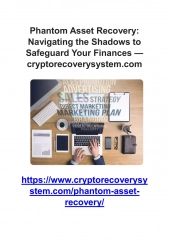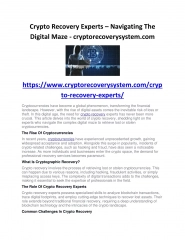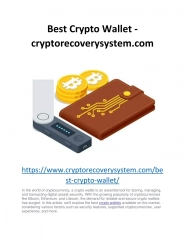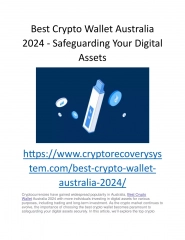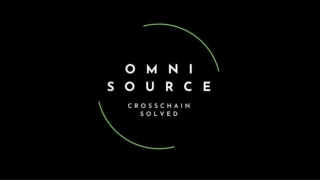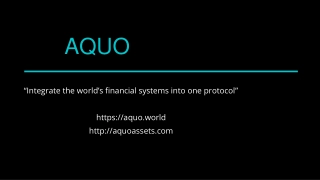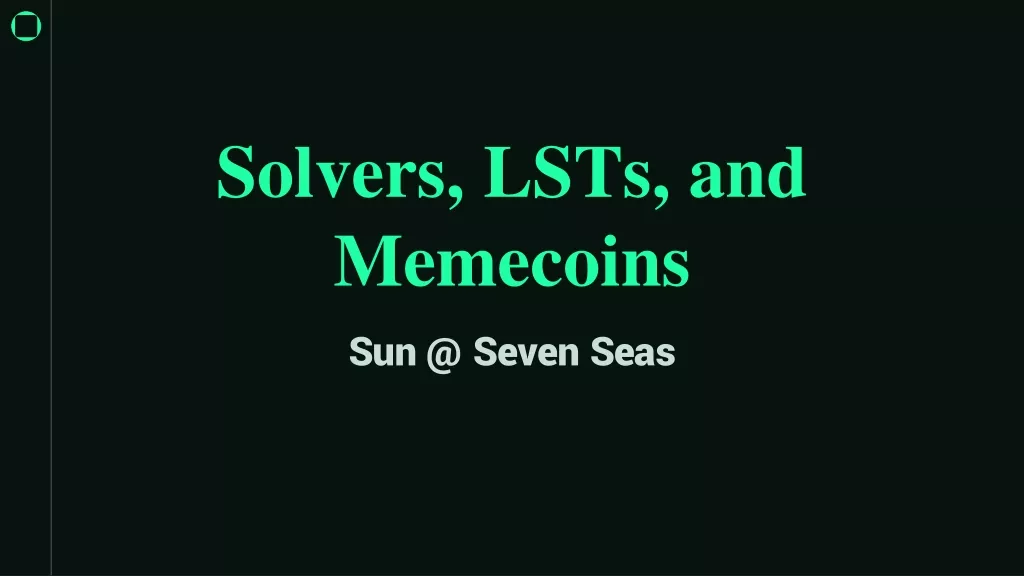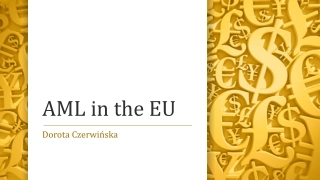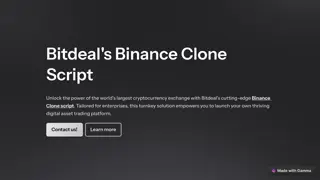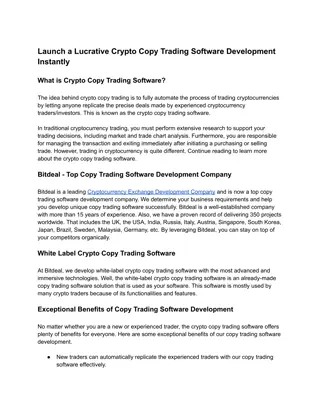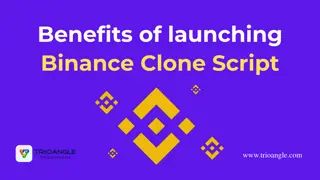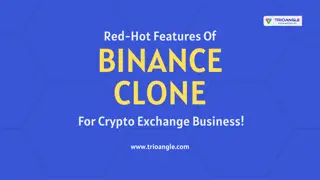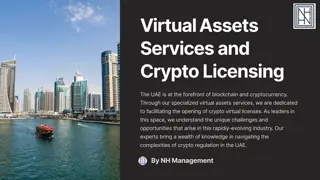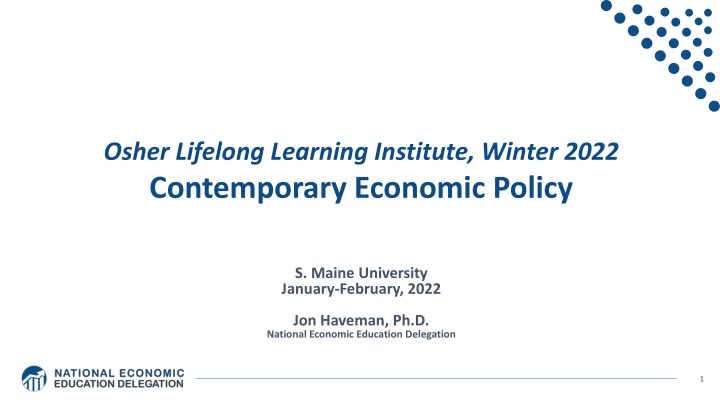
Bitcoin Revolution: Exploring Cryptocurrencies and Economic Impact
Discover the impact of Bitcoin on finance and the economy in this insightful course outline from Osher Lifelong Learning Institute. Explore the potential of cryptocurrencies, regulations, and financial innovations. Join discussions on Bitcoin's role, technological advancements, and the future of digital currencies.
Download Presentation

Please find below an Image/Link to download the presentation.
The content on the website is provided AS IS for your information and personal use only. It may not be sold, licensed, or shared on other websites without obtaining consent from the author. If you encounter any issues during the download, it is possible that the publisher has removed the file from their server.
You are allowed to download the files provided on this website for personal or commercial use, subject to the condition that they are used lawfully. All files are the property of their respective owners.
The content on the website is provided AS IS for your information and personal use only. It may not be sold, licensed, or shared on other websites without obtaining consent from the author.
E N D
Presentation Transcript
Osher Lifelong Learning Institute, Winter 2022 Contemporary Economic Policy S. Maine University January-February, 2022 Jon Haveman, Ph.D. National Economic Education Delegation 1
Course Outline Contemporary Economic Policy - Week 1 (1/11): US Economy & Coronavirus Economics - Week 2 (1/18): Federal Debt (Ryan Herzog, Gonzaga University) - Week 3 (1/25): Economics of Immigration (Jennifer Alix-Garcia, Oregon St.) - Week 4 (2/1): Health Economics (Me) - Week 5 (2/8): Minimum Wage (Me) - Week 6 (2/15): Cryptocurrencies (Geoffrey Woglom, Amherst College) 2
Submitting Questions Please submit questions of clarification in the chat. - I will try to handle them as they come up We will do a verbal Q&A once the material has been presented. OLLI allowing, we can stay beyond the end of class to have further discussion. Slides will be available on the NEED website tomorrow (www.NEEDelegation.org) 3
Outline of the Talk Fun Facts about Bitcoin A little bit on the underlying technology of bitcoin. Economist evaluation of 2 Key Questions 1. Is Bitcoin serving a legitimate economic role? 2. Is their potential for valuable financial innovations with the underlying technology? In order to tap that potential, we need: 1. Legislation to provide good regulation of crypto markets. 2. The Federal Reserve needs to follow other central banks in creating a safe and secure, digital means of payment: Central Bank Digital Currency (CBDC) 4
But First, What is Bitcoin? Bitcoin is the first cryptocurrency and was invented in 2008. Cryptocurrencies are a form of money that exists solely as a computer record. More importantly, 5
Bitcoin Has Started a Revolution in Finance 1. The way we buy and sell things, our payments system; the way we save, borrow and invest; the role of banks and other financial firms are rapidly changing. 2. In my view, Bitcoin will NOT be an important player in these developments, but the technologies underlying Bitcoin will. 3. Good Regulation is needed: to control the excesses of these new technologies, while allowing for beneficial innovations. 4. Should the Fed issue a digital dollar? 6
Bitcoins: What is the Excitement About? Blue Line Price of Bitcoin Red Line: S&P 500 Today, 11:30 1 bitcoin = $44k 7
An Origin Story Worthy of a Pulp Novel! The Mysterious Satoshi Nakamoto: - Lehman Brothers Bankruptcy, 9/2008 - Halloween 2008: a white paper is published on the Internet laying out the idea and design for Bitcoin. The author (or authors) used Satoshi Nakamoto as a pseudonym. - January 2009: Satoshi releases the first version of the Bitcoin software. - 2009-2010: Satoshi releases new versions of the software and is actively involved in Internet Chatter about Bitcoin. - April 2011: Satoshi ceases all known and/or verified communications. To this date the identity or identities of Satoshi are unknown. 9
The Possible Economic Role for Bitcoin Satoshi s Vision: A purely peer-to-peer version of electronic cash [that] would allow online payments to be sent directly from one party to another without going through a financial institution. More, prosaically 1. Facilitate payments at lower costs with speed and security. 1. E.g., Credit Card Fees. 2. Merchant doesn t get paid for at least 2 days. 3. 2019 Capital One hackers access personal information of 106 m users 2. Meet the needs of previously unbanked. 1. Particularly a problem in the Developing World, but 2. Fed estimates that 50 million US adults have little or no banking relationships. 10
Facts about Cryptocurrencies (as of 2/15) Bitcoin was the first and is the largest in terms of market cap (total value of all bitcoins) of about $837 billion. Ethereum is in second place with a market cap of about $373 billion. Presently, 11,500 different varieties with a total market cap of about $2.1 trillion (https://www.coingecko.com/en) NY stock exchange market cap is about $25 trillion 11
Underlying Technology of Bitcoin 1. Digital Token (exists only as data on a computer) whose ownership is cryptographically protected. 2. Distributed Ledger, Block Chain Technology. 3. Software protocol the provides a consensus mechanism on the validity of transactions without a trusted third party. (i.e, a bank or the Fed) 12
So, how does it work? Jack, the owner of a bitcoin is given a public number or key and a private encrypted key. Jack can trade his bitcoin with Jill by using Jill s public key and verifying the transaction with his private key. The new transaction is then posted on a a number of different computers and can be read by anyone. The clearing of the transaction is done with public database or distributed ledger called a blockchain through a process know as bitcoin mining. Bitcoin miners have enormous computing power and they compete to add new transactions to the blockchain 13
Mining for Bitcoin Bitcoin Miners gather about 3000 new transactions into a block. The miners competition involves generating long, random numbers ( hashing ) until one of the numbers fits a precise set of attributes. The winning miner then adds the new block to the previous block in the blockchain. The total process takes about 10 minutes The incentive for miners is that the winner of the competition gets compensated with new bitcoins and transaction fees. However, the miner will not get the reward unless other miners subsequently add new blocks to the first miner s block. In this way transactions are added to the chain via a consensus of miners. 14
Question #1: Is Bitcoin serving an economic role Bitcoin is not and cannot be widely used to make transactions Scalability? Price Instability. Transactions costs Cash ATM vs. Bitcoin ATM And, the network is costly BIS, Annual Report 2018, Chapter V 15
What Role Does Bitcoin Play? For some it plays the same role as $100 bills: 32.8% of all bills in circulation (more than the number of $1 bills) and 80.2% of the value of all bills. Illegal Activity: This claim is disputed: https://www.newsweek.com/illegal-use- bitcoin-dropped-50-2020-citibank-reports-1573263 16
But What about as an Investment? It is hard to argue with the fact that Bitcoin has provided outsized returns for many, albeit very volatile. But what is its the fundamental value ? To me it is a purely speculative investment. 17
How Do Economist Think About Investments? Good Starting Place In the short term the stock market behaves like a voting machine, but in the long term it acts like a weighing machine. What is being weighed is prospective payments from the security, or other intrinsic value, i.e. its fundamental value. Bitcoin? 18
So, What is the Harm? , when [an American] purchases an investment, the American is attaching his hopes, not so much to its prospective yield, as to a favourable change in the [current price], i.e. that he is, ,a speculator. Speculators may do no harm as bubbles on a steady stream of enterprise. But the position is serious when enterprise becomes the bubble on a whirlpool of speculation. When the capital development of a country becomes a by-product of the activities of a casino, the job is likely to be ill-done. J.M. Keynes, General Theory, Ch 12 19
Question #2: The Value of the New Technology? Don t Throw the baby out with the bathwater! The value cryptographically protected digital-tokens is nuanced: Blockchain technologies have significant promise some of which is already being realized. - Private blockchains, Walmart and its produce suppliers - Ethereum and smart contracts See: Mehta N,. Agashe A., P. Detroja Blockchain Bubble or Revolution, 2021 20
Smart Contracts on the Blockchain A Smart Contract is a computer code that resides on the block chain and is executed based on incoming information. Example, Parametric Hurricane Insurance via the Blockchain: - Computer program on Ethereum continuously monitors Charleston Executive Airport wind speed for 1 year. - If the windspeed is greater than 150 miles per hour, immediately transfers 100 bitcoin to the Seabrook Island Property Association. - If the windspeed is less than 150 miles per hour, but more than 125 miles per hour, immediately transfers 75 bitcoin; etc. Smart Contracts are Automatic, Immediate, Irreversible and Uncontestable. 21
DeFi and Smart Contracts Broad Category of Decentralized Financial Services - Crypto exchanges, online lending platforms, crypto derivatives, insurance, startup finance, etc. - Explosion over time: $1b in 2019; $15b in 2020; $100b as of 12/2021 (DefiPulse.com). Smart Contracts are executed mostly on the Ethereum blockchain. No brokers, financial intermediaries, traders, and little regulation. Note in my insurance example, that bitcoin isn t a great means of payment because of price volatility. 22
But What about Digital Payments for Consumers? Who pays for their lattes with cash? We already have digital payments, but what about the needs of the unbanked? The US and the developed world are far behind Africa: Mobile, as in cellphone money, the M-Pesa. Grameen Foundation: Making Cash Digital is the Key to Possibility When Poor Women Control their own money, it no longer controls them. 23
Retail versus Wholesale Digital Payments Retail: M-pesa Wholesale: Cryptocurrency for DEFI transactions. Bitcoin doesn t work for either because of transactions costs and price volatility. But, to tap into the potential benefits of DEFI we need: 1. A safe and secure stablecoin to facilitate DEFI transactions, at least wholesale transactions. 2. Regulation of crypto markets and DEFI 24
Stablecoins: Cryptocurrency with a stable value of $1 (we hope) 2014 Tether : a cryptocurrency supposed to be backed by dollars so its price would always have a value of $1. All sorts of operational and legal problems. Enter Facebook and Diem: Proposed blockchain enabled stablecoin. Meta (Facebook) dropped out of the Diem project on 1/31/2022 due to regulatory pressure 25
Clean Up the Mess on Aisle 3 Gary Gensler, Chair of the SEC quote from a WP interview. Rostin Benham, Chair of the CFTC Janet Yellen at Treasury. Sarah Bloom Raskin, nominated to the Fed as Vice Chair for regulation. They will act, but they would need Congressional legislation, too: Cash markets in cryptocurrencies are viewed as commodities and are unregulated 26
Cryptocurrency is the Wild West of our Financial System Sen. E. Warren of Mass Pick Your Own Adventure: Mt. Gox, hacked in 2011 and $9 million in bitcoin stolen. Vows to do better, but suffers a $615 million hack in 2014. How the Feds Tracked Down $3.6 Billion in Stolen Bitcoin WSJ, 2/9/2022. 27
Good News? 28
What is Good Regulation? The Principles Are Easy; 1. Eliminate fraud, abuse and manipulation. 2. Do not let markets be dominated by a small number of powerful firms. 3. Allow startups with new innovations to displace incumbent firms. Legislation and Implementation: Not So Easy 30
1930s Regulation in the 21st Century Bank: An institution that accepts deposits and makes loans for a profit. - Stablecoins? - Money Market Mutual Funds? Investment Contract subject to security laws (Howey Test): 1. Investment of Money 2. Common Enterprise (pooling of funds) 3. Expectation of profit from effort others. - BlockFI and crypto Lending 31
BlockFI Crypto currency exchange founded in 2017 that offers a variety of consumer financial services 1. Crypto wallets for storing crypto. 2. Credit Cards with Bitcoin rewards. 3. Crypto Loans: borrow 50% of your crypto account in $s March 2019 BIA accounts - Deposit Bitcoin and earn high interest rates. - BlockFi lends out the bitcoin to other individuals and institutions. How Does BIA fare on the Howey Test? 32
Yesterdays NYTimes Headline BlockFi, a crypto firm, reaches a $100 million settlement for failing to register loan products. 1. Cannot offer existing accounts to US residents. 2. The SEC will work with BlockFi to develop account that meets US security law 33
Do We Need More Than (Good) Regulation? The Bank for International Settlement (BIS) and a number of central banks are exploring how the development of Central Bank Digital Currency (CBDC) contribute to an open, safe and competitive monetary environment that supports innovation and serves the public interest. Source of quotes, BIS Annual Report 2021 34
Two Recent Government Report Presidential Working Group on Financial Markets on Stable Coins and CBDC, 11/2021. Federal Reserve Discussion Paper on CBDCs, 1/2022 1. Congress needs to authorize action 2. Digital Dollar should be managed by commercial banks and other regulated, insured firms 35
CBDCs and Other Central Bank Liabilities The Fed and most Central Banks presently already have digital money! CBDCs would permit wider access to the Fed s digital assets to other financial institutions and possibly to the public In addition, CBDCs could be designed for rapid settlement, finality, privacy and security (perhaps using blockchain technology) 36
The Devil Is In the Details Countries as Diverse as Sweden, Ecuador and China have begun experiments with CBDCs. Where s the Fed? Source: E. Prasad, The Future of Money 37
Resources to Learn More N. Mehta, et.al. Blockchain Bubble or Revolution E Prasad, The Future of Money (https://youtu.be/o3NuHb7V1IA) Presidential Working Group on Financial Markets, 11/1/21 (https://home.treasury.gov/system/files/136/StableCoinReport_No v1_508.pdf) Money and Payments: The U.S. Dollar in the Age of Digital Transformation, 1/20/22 (https://www.federalreserve.gov/publications/files/money-and- payments-20220120.pdf) 39
Available NEED Topics Include: Coronavirus Economics Immigration Economics US Economy Housing Policy Climate Change Federal Budgets Economic Inequality Federal Debt Economic Mobility Black-White Wealth Gap Trade and Globalization Autonomous Vehicles Minimum Wages US Social Policy 40
Questions? www.NEEDelegation.org Geoffrey Woglom grwoglom@amherst.edu Contact NEED: Info@NEEDelegation.org Submit a testimonial: www.NEEDelegation.org/testimonials.php Support NEED: www.NEEDelegation.org/donate.php 41
Glossary Traditional Money is currency plus bank checking accounts. Currency is paper and coin issued by the government. Currency is legal tender and must be accepted for all debts. Transactions using currency are immediate and final (can t be undone without the agreement of both parties.) Digital Payments are used for purchases where no physical money is exchanged. Examples include many online banking payments, credit card payments, PayPal. Digital Currency or Virtual currency is a form of money that exists solely in digital form, such as a digital token (i.e., as data on a computer). Examples: cryptocurrencies, central bank digital currencies and virtual currencies used in online gaming. Cryptographic identity protection assigns people two account numbers, or keys, one public and one private. Public record keeping is done using the public key and transactions are authorized using the private key. Cryptocurrency is a digital currency where the owner s identity is protected using cryptographic encryption and where record keeping is done with a public blockchain, e.g., Bitcoin. Stablecoin is a cryptocurrency with a stable value of $1, somewhat like a money market mutual fund. 42
Glossary (Cont.) Distributed ledger is a database for recording transactions or other information, where the information or ledger is shared on a network of many computers simultaneously. Blockchains are distributed ledgers where new transactions (new blocks) are added to the chain sequentially when a consensus of the network agrees that the transactions are valid. Decentralized Finance (DeFi) is peer-to-peer financial activity conducted through public blockchains and smart contracts. Smart Contracts are computer programs that execute automatically based on external conditions. Example, travel insurance that pays off automatically when a flight is cancelled. Central Bank Digital Currency (CBDC) is a digital currency issued by a central bank. Different central banks are experimenting with various forms of CBDCs, including some using blockchain technology, electronic wallets and cryptography. 43

